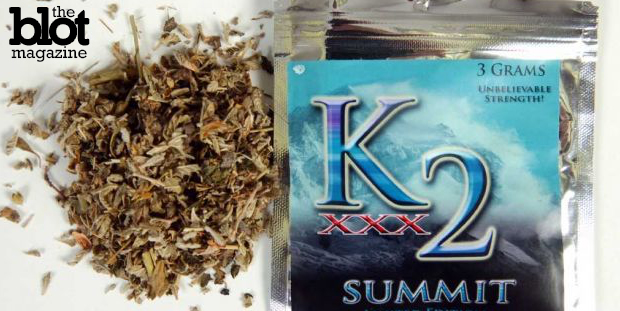To prevent more New Yorkers from experiencing the scary side effects that can result from smoking synthetic marijuana, Gov. Andrew Cuomo wants to beef up state regulations.
From April 1 to June 30, individuals who used synthetic marijuana — which goes by the street name “Spice” among other branded variations — made more than 1,900 emergency department visits and 680 calls to poison control centers. That’s an astonishing tenfold increase over the identical period in 2014.
Nationally, from January through May, 15 deaths from ingesting the substances that market themselves as a legal high and mimic the effects of smoking marijuana have been reported to poison control centers. There have no been deaths reported yet in New York state.
The state banned many compounds and bath salts used to manufacture the synthetic cannabinoids in 2012. Now Cuomo is calling for stronger Health Department regulations to include new chemical compounds that drug manufacturers have begun to use since. Frightening health effects that land users in the hospital can include extreme agitation, anxiety, nausea, vomiting, high blood pressure, tremor, seizures, hallucinations, paranoia, arrested heart rate, loss of consciousness and violent behavior.
State health officials have compared the sometimes violent and bizarre effects of batches of Spice to those of phencyclidine, or PCP. The new emergency regulations proposed by Cuomo will expand the current list of banned substances to add two more classes of chemical compounds that drug manufacturers have started to make batches of Spice with since 2012.
Further adding to the public health dangers of synthetic marijuana is that young people are the most likely group to use the drug. The lower cost compared to pot and near-equal availability mean young people are more likely to experiment with synthetic marijuana because it is marketed as a legal high, one that won’t show up in most drug tests.
Read more: Spice, A Synthetic Marijuana, Is Not Nice
In fact, a majority of calls to the Upstate Poison Control Center in 2011 involved young people under the age of 19. This is mirrored by the results of a 2011 national survey of drug-use trends among youth, which showed 11.4 percent of 12th graders used a synthetic cannabinoid during the 12 months prior to the survey. After marijuana, Spice is the second most commonly used illicit drug among high school seniors, but in contrast to pot, the effects on users vary widely and are wildly unpredictable.
According to health officials, the “fake” drugs can have compound effects on long-term users. In addition, the products are also highly addictive and often abused.
“This rash of medical emergencies is proof positive that these synthetic drugs are dangerous and a threat to public health,” Gov. Cuomo said in a statement. “These new, stronger regulations will allow us to crack down on these harmful products and stop those who seek to skirt the law in order to sell these drugs and the misery that comes with them.”
Adding to their danger, the drugs come with innocuous-sounding names that mask their true potency. The substances are marketed as a safe and legal high under the titles potpourri, incense and herbal mixtures to belie their true ingredients and evade detection by law enforcement. The drugs are typically made of plant material that is sprayed with an array of chemicals to mimic the effects of smoking marijuana. But because consumers cannot be sure which chemicals are used in what amounts and in what batches, the effects can vary tremendously from each supply and use.
Synthetic marijuana brands are marketed under names Spice, K2, Green Giant, Smacked, Wicked X, AK-47, Geeked Up, Ninja, Caution and Red Giant. The mixtures are often changed or altered to remain viable and evade detection by authorities. The regulations proposed would expand to include hundreds of various potentially harmful chemical compounds and are pending approval by the New York State Public Health and Health Planning Council upon filing with the Department of State.
“Synthetic marijuana poses a threat to the health and safety of all New Yorkers and we will continue to do all we can to get these drugs off the street,” New York State Health Commissioner Dr. Howard Zucker said in a statement. “Too many people have fallen victim to synthetic marijuana. Updates to our regulations expand the chemical compounds banned in order to strengthen our fight against this illegal and dangerous industry.”
Often sold under the table at bodegas, smoke shops and gas stations, the new enforcement measures will sanction owners of establishments, as well as anyone possessing, distributing, selling or offering for sale prohibited synthetic drugs in violation of the regulations. These entities are subject to criminal penalties that can include fines of up to $500 and up to 15 days in jail. Civil penalties can include fines up to $2,000 per violation.
Comparatively, penalties for pot possession or selling carry more jail time but smaller fines. For pot possession up to eight ounces, the offense constitutes a misdemeanor and possible jail time of a year with a $1,000 maximum fine. The penalty for selling marijuana — 25 grams or less — is a misdemeanor as well and also carries one year in prison and a maximum $1,000 fine.
Noah Zuss is a reporter for TheBlot Magazine.






